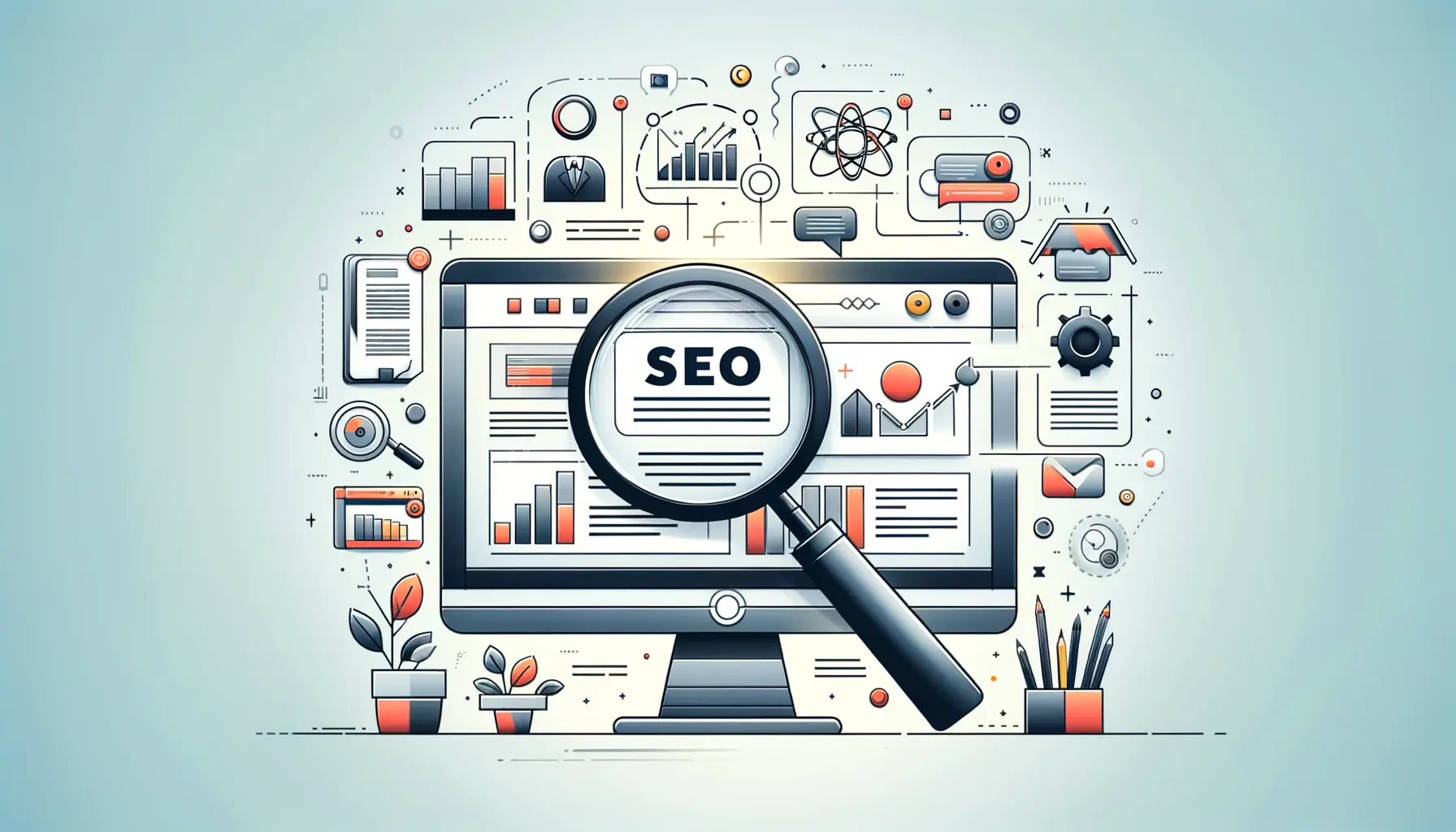Optimizing a SaaS (Software as a Service) website for search engines is a critical component of a successful digital marketing strategy.
On-page SEO, the practice of optimizing web page content for search engines and users, is particularly vital for SaaS companies.
It’s not just about sprinkling keywords throughout your site; it involves a comprehensive approach to making your website more visible and attractive to both search engines and potential customers.
This article delves into the nuances of on-page SEO for SaaS companies, offering actionable insights and strategies to enhance your online presence.
The landscape of SaaS is highly competitive, with numerous companies vying for attention in a crowded digital space.
On-page SEO stands out as a fundamental tactic to not only improve rankings but also to establish authority and trust with your target audience.
By optimizing your website content, structure, and on-site signals, you can significantly increase your chances of ranking higher in search engine results pages (SERPs), driving more organic traffic, and ultimately, converting visitors into loyal customers.
- Understanding On-Page SEO for SaaS
- Strategic Keyword Research and Implementation
- Optimizing Site Structure and Navigation
- Creating Compelling and Valuable Content
- Enhancing User Experience (UX) for SEO
- Leveraging Technical SEO for SaaS Websites
- Implementing Effective CRO Strategies
- Maximizing SaaS Success Through On-Page SEO
- On-Page SEO for SaaS Websites: FAQs
Understanding On-Page SEO for SaaS
On-page SEO for SaaS websites encompasses a variety of elements, each contributing to the overall effectiveness of your online marketing efforts.
From the way you structure your website to the content you create, every aspect plays a crucial role in how search engines understand and rank your site.
The goal is to create a seamless, user-friendly experience that not only appeals to search engines but also provides value to your visitors.
At its core, on-page SEO involves optimizing the content and HTML source code of a page.
This includes title tags, meta descriptions, header tags, and keywords.
However, for SaaS companies, it goes beyond these basics to include content marketing strategies, user experience (UX) design, and conversion rate optimization (CRO).
These elements work together to build a website that not only ranks well but also captivates and converts your target audience.
Key Components of On-Page SEO
- Title Tags and Meta Descriptions: These HTML elements provide a brief and compelling summary of your web page’s content, influencing click-through rates from the SERPs.
- Header Tags: Organizing content with H1, H2, H3 tags helps search engines understand the structure and relevance of your content, improving readability for users.
- Keyword Optimization: Identifying and incorporating relevant keywords into your content, URLs, and meta tags is crucial for search visibility.
- High-Quality Content: Creating informative, engaging, and valuable content addresses your audience’s needs and questions, establishing your SaaS as a thought leader in the industry.
- User Experience (UX): A website that’s easy to navigate and interact with can significantly improve user satisfaction and conversion rates.
Optimizing your SaaS website for on-page SEO is not just about improving search engine rankings; it’s about creating a better user experience that engages and converts visitors into customers.
Implementing effective on-page SEO strategies requires a deep understanding of your audience, the competitive landscape, and the latest SEO best practices.
By focusing on these key components, SaaS companies can enhance their online visibility, attract more qualified traffic, and achieve sustainable growth in the digital marketplace.
Strategic Keyword Research and Implementation
Keyword research is the cornerstone of any successful on-page SEO strategy, especially for SaaS companies.
It involves identifying the terms and phrases your potential customers use when searching for solutions that your software provides.
This step is crucial because it informs the content creation process, ensuring that your website speaks the language of your target audience, thereby improving your visibility in search engine results.
For SaaS businesses, keyword research goes beyond finding high-volume search terms.
It’s about understanding the intent behind the searches—whether users are looking for information (informational intent), comparing options (navigational intent), or ready to purchase (transactional intent).
This understanding allows SaaS companies to tailor their content to meet users at different stages of the buyer’s journey, from awareness through to decision-making.
Tools and Techniques for Effective Keyword Research
- Utilize SEO Tools: Platforms like Ahrefs, SEMrush, and Moz offer powerful keyword research tools that provide insights into search volume, keyword difficulty, and search intent.
- Analyze Competitors: Examining the keywords that successful competitors rank for can uncover valuable opportunities to capture market share.
- Focus on Long-Tail Keywords: These are longer, more specific phrases that are less competitive and often have a clearer intent, making them valuable for SaaS companies targeting niche markets.
Implementing Keywords Strategically
Once you’ve identified your target keywords, the next step is to incorporate them into your website in a way that feels natural and provides value to your readers.
This means using keywords in your titles, headings, meta descriptions, and throughout your content.
However, it’s crucial to avoid keyword stuffing, which can negatively impact your SEO efforts.
Instead, focus on creating content that naturally integrates your keywords while addressing the needs and questions of your audience.
Moreover, consider the semantic variations of your primary keywords.
Search engines are sophisticated enough to understand synonyms and related terms, which means you can write in a way that’s natural and engaging without sacrificing SEO performance.
This approach not only helps with search engine rankings but also enhances the user experience by providing rich, informative content.
Remember, the goal of keyword research and implementation is not just to attract traffic, but to attract the right kind of traffic—potential customers who are genuinely interested in what your SaaS has to offer.
Optimizing Site Structure and Navigation
The structure of your SaaS website plays a pivotal role in both user experience (UX) and search engine optimization (SEO).
A well-organized site helps users find the information they need with minimal effort and enables search engines to crawl and index your content efficiently.
For SaaS companies, where the product offerings can be complex, a logical and intuitive site structure is essential for guiding potential customers through the buyer’s journey.
Optimizing your site structure involves organizing your content in a hierarchical manner that reflects the importance of each page and its relation to other pages on your site.
This hierarchy should be evident in your navigation menus, which act as a roadmap for both users and search engines.
By streamlining navigation, you reduce bounce rates and encourage deeper engagement with your content, which are positive signals to search engines.
Best Practices for Site Structure and Navigation
- Use a Simple, Intuitive Navigation Menu: Your main navigation menu should be easy to understand and use, with clear labels that accurately describe the content of each page.
- Implement a Logical URL Structure: URLs should be straightforward and include keywords where appropriate. This not only helps with SEO but also improves the user experience by making the URL easy to read and understand.
- Leverage Breadcrumbs: Breadcrumbs are navigational aids that show users their current location on the site and how they got there. They help users navigate your site more effectively and also provide additional structure for search engines.
- Optimize Your Site’s Internal Linking: Internal links are links that go from one page on your domain to another. They help distribute page authority throughout your site and make it easier for search engines to crawl all your content.
For SaaS websites, it’s also beneficial to create dedicated landing pages for each of your key features or services.
These pages should be easily accessible from the main navigation and optimized for specific keywords related to the feature or service.
This not only improves SEO for those keywords but also provides a focused, informative experience for visitors interested in specific aspects of your SaaS offering.
Remember, the goal is to make it as easy as possible for both users and search engines to understand and navigate your site.
A well-optimized site structure and navigation setup can significantly impact your site’s usability, search engine rankings, and ultimately, your conversion rates.
Consider user feedback and analytics data when optimizing your site structure and navigation. Understanding how real users interact with your site can provide valuable insights into areas for improvement.
Creating Compelling and Valuable Content
Content is the heart of on-page SEO, especially for SaaS companies aiming to establish authority and engage potential customers.
Creating compelling and valuable content not only helps in attracting and retaining users but also significantly boosts your SEO efforts.
For SaaS websites, where the product or service can often be complex and technical, the ability to distill information into accessible, engaging content is crucial.
This involves not just talking about features but addressing the problems your software solves and how it benefits users.
Effective content marketing for SaaS goes beyond mere product descriptions.
It encompasses a variety of formats and topics, from educational blog posts and how-to guides to case studies and video tutorials.
The key is to provide content that resonates with your target audience at different stages of their buyer’s journey, offering them the information they need when they need it.
By doing so, you not only improve your site’s SEO but also build trust with your audience, positioning your SaaS as a reliable and authoritative source in your industry.
Strategies for Developing Impactful SaaS Content
- Identify Your Audience’s Pain Points: Understand the challenges and questions your target audience faces and create content that addresses these issues directly.
- Use a Variety of Content Formats: Different users prefer different types of content. Utilize blog posts, videos, infographics, and downloadable resources to cater to diverse preferences.
- Focus on Quality and Depth: In-depth, well-researched content that provides real value to your audience is more likely to be shared, linked to, and ranked favorably by search engines.
- Optimize for Search Intent: Tailor your content to match the search intent behind the keywords you’re targeting, whether it’s informational, navigational, or transactional.
Another critical aspect of content creation for SaaS is consistency.
Regularly publishing fresh, relevant content keeps your audience engaged and signals to search engines that your site is active and authoritative.
However, consistency should not come at the expense of quality.
Every piece of content you publish should meet a high standard of accuracy, relevance, and usefulness to your audience.
Lastly, don’t forget to promote your content.
Utilizing social media, email marketing, and other channels to distribute your content increases its reach and impact.
Engaging with your audience through comments and discussions can also provide insights into their needs and preferences, informing future content creation.
True success in content marketing for SaaS comes from understanding your audience deeply, addressing their needs with high-quality content, and maintaining a consistent, engaging presence across all your platforms.
Enhancing User Experience (UX) for SEO
User experience (UX) has become an integral part of SEO, especially for SaaS websites aiming to convert visitors into users.
A positive UX can significantly reduce bounce rates, increase time on site, and improve conversion rates—all of which are beneficial for SEO.
For SaaS companies, where the product itself is digital, the website’s user experience can also serve as a reflection of the product’s quality.
Therefore, optimizing UX is not just about appeasing search engines but also about providing value and building trust with potential customers.
Enhancing UX involves a comprehensive approach, focusing on website design, loading speed, mobile responsiveness, and intuitive navigation.
Each of these elements contributes to how users perceive and interact with your site.
A well-designed, fast-loading, and easy-to-navigate website can make the difference between a visitor exploring your SaaS solution further or leaving the site in frustration.
Key UX Elements to Optimize on Your SaaS Website
- Improve Site Speed: Users expect fast-loading pages. Utilize tools like Google’s PageSpeed Insights to identify and fix issues that may be slowing down your site.
- Mobile Responsiveness: With an increasing number of users accessing the web via mobile devices, ensuring your site is mobile-friendly is crucial for both UX and SEO.
- Clear and Intuitive Navigation: Users should be able to find the information they need with ease. Simplify your site’s structure and navigation to enhance usability.
- Engaging Visual Design: A visually appealing site can make a strong first impression. Use high-quality images, videos, and a coherent color scheme to enhance aesthetic appeal and user engagement.
Moreover, incorporating interactive elements such as chatbots for customer support or interactive demos can significantly enhance the user experience.
These tools not only provide immediate assistance to users but also engage them in a way that static content cannot.
However, it’s important to ensure that these elements do not detract from the site’s performance or overwhelm the user.
Feedback mechanisms, such as surveys or feedback forms, can also play a crucial role in optimizing UX.
They provide direct insights from users about their experiences and preferences, allowing you to make informed improvements to your site.
Remember, the goal of optimizing UX for SEO is to create a seamless, enjoyable experience for your users that encourages them to stay longer and engage more deeply with your content and SaaS offerings.
A strong UX is a cornerstone of a successful SaaS website, directly impacting both SEO performance and customer satisfaction. By prioritizing user experience, you not only improve your search engine rankings but also create a positive, lasting impression on your visitors.
Leveraging Technical SEO for SaaS Websites
Technical SEO is the backbone of a successful on-page SEO strategy, particularly for SaaS websites.
It involves optimizing the infrastructure of your site to improve its visibility and ranking in search engine results.
For SaaS companies, where the functionality and performance of the digital product are paramount, technical SEO can significantly impact the user experience and, by extension, conversion rates.
This aspect of SEO ensures that your site is easily crawlable, loads quickly, and is secure—a trifecta that search engines reward with higher rankings.
Technical SEO encompasses a wide range of practices, from optimizing your site’s code and structure to ensuring it is mobile-friendly and secure.
These optimizations help search engines more effectively crawl and index your site, which is crucial for visibility.
Moreover, they contribute to a smoother, faster, and more secure user experience, aligning with the expectations of both users and search engines.
Essential Technical SEO Practices for SaaS Sites
- Ensure Mobile-Friendliness: With Google’s mobile-first indexing, having a mobile-responsive website is non-negotiable. Use Google’s Mobile-Friendly Test tool to check your site’s mobile usability.
- Improve Site Speed: Site speed is a critical ranking factor. Optimize images, minify CSS and JavaScript, and leverage browser caching to enhance loading times.
- Secure Your Site with HTTPS: Security is a top priority for users and search engines alike. Migrate your site to HTTPS to protect user data and improve trustworthiness.
- Optimize for Crawl Efficiency: Use the robots.txt file and XML sitemaps to guide search engine bots through your site, ensuring they can crawl and index your content efficiently.
For SaaS websites, another key aspect of technical SEO is the optimization of landing pages and sign-up forms.
These pages are often the final step in converting a visitor into a lead or customer.
Optimizing these elements for both performance and user experience can significantly increase conversion rates.
This includes simplifying forms, improving page load times, and ensuring clear, compelling calls-to-action (CTAs).
Finally, regularly auditing your site for technical SEO issues is crucial.
Tools like Google Search Console, Screaming Frog SEO Spider, and SEMrush can help identify and rectify common technical SEO problems, such as broken links, duplicate content, and crawl errors.
By addressing these issues promptly, you can maintain and improve your site’s SEO performance over time.
Neglecting technical SEO can lead to a host of issues that hinder your SaaS website’s performance and visibility. Regular audits and optimizations are essential to keep your site competitive in the ever-evolving digital landscape.
Implementing Effective CRO Strategies
Conversion Rate Optimization (CRO) is a critical component of on-page SEO for SaaS websites, focusing on converting visitors into leads or customers.
While SEO efforts drive traffic to your site, CRO ensures that this traffic is effectively converted into tangible outcomes, such as sign-ups, subscriptions, or demo requests.
For SaaS companies, where the website often serves as the primary sales channel, CRO can significantly impact the bottom line.
Effective CRO involves understanding your audience’s behavior on your site and making data-driven decisions to improve the user journey towards conversion.
This includes optimizing various elements of your website, such as the landing pages, sign-up forms, and calls-to-action (CTAs), to make them more compelling and user-friendly.
By aligning these elements with the expectations and needs of your visitors, you can enhance their experience and increase the likelihood of conversion.
Key CRO Techniques for SaaS Websites
- Optimize Landing Pages: Ensure that your landing pages are clear, concise, and focused on a single conversion goal. Use persuasive copy, high-quality visuals, and prominent CTAs to guide users towards taking action.
- Simplify Sign-Up Processes: Reduce friction in the sign-up process by minimizing the number of steps and fields in forms. Consider using social login options to streamline the process further.
- Use A/B Testing: Experiment with different versions of your web pages to determine which elements most effectively drive conversions. This can include variations in copy, layout, images, and CTAs.
- Implement Clear CTAs: Your CTAs should be visually distinct and placed strategically throughout your site. Use action-oriented language that clearly communicates the value proposition to your users.
Additionally, leveraging analytics and user feedback is essential for successful CRO.
Tools like Google Analytics, Hotjar, and user surveys can provide insights into how users interact with your site and where they encounter obstacles in the conversion process.
By continuously monitoring and analyzing this data, you can identify opportunities for improvement and implement targeted optimizations.
Ultimately, CRO is an ongoing process of testing, learning, and refining.
It requires a deep understanding of your audience and a commitment to enhancing their experience at every touchpoint.
For SaaS companies looking to maximize the ROI of their SEO efforts, implementing effective CRO strategies is not just beneficial—it’s essential.
Remember, the goal of CRO is not just to increase conversions but to create a seamless and satisfying experience for your users that encourages long-term engagement and loyalty.
Maximizing SaaS Success Through On-Page SEO
In the digital age, where SaaS platforms abound, standing out in a crowded market is more challenging and crucial than ever.
On-page SEO emerges as a linchpin in this endeavor, offering a strategic advantage to those SaaS companies willing to invest time and resources into optimizing their online presence.
This comprehensive approach to on-page SEO is not merely about enhancing visibility in search engine results; it’s about crafting an engaging, user-centric experience that resonates with potential customers and drives conversions.
Building a Foundation for Growth
At the heart of effective on-page SEO for SaaS websites is a deep understanding of the target audience and the creation of content that addresses their needs, questions, and pain points.
By focusing on strategic keyword research, site structure, compelling content, user experience, technical SEO, and conversion rate optimization, SaaS companies can build a solid foundation for sustainable growth.
Each element of on-page SEO works in concert to not only attract visitors but also to engage and convert them into loyal users.
Key Takeaways for SaaS On-Page SEO
- Strategic keyword research and implementation ensure that your content speaks directly to your target audience’s search intent.
- An optimized site structure and navigation facilitate a seamless user journey, enhancing both user experience and search engine crawlability.
- Creating compelling and valuable content establishes your SaaS as a thought leader, building trust and authority in your niche.
- Enhancing user experience through design, speed, and mobile responsiveness directly impacts user satisfaction and SEO performance.
- Leveraging technical SEO ensures that your website’s backend is as optimized as its frontend, contributing to overall site health and visibility.
- Implementing effective CRO strategies maximizes the return on your SEO efforts by converting traffic into tangible outcomes.
As the digital landscape continues to evolve, so too must the strategies employed by SaaS companies to attract, engage, and retain customers.
On-page SEO is not a one-time task but a continuous process of optimization and adaptation.
By staying informed of the latest SEO best practices and remaining attuned to the needs of your audience, your SaaS can achieve not just visibility, but relevance and success in the competitive online marketplace.
In conclusion, on-page SEO is a critical component of a comprehensive digital marketing strategy for SaaS companies.
It requires a holistic approach, combining technical excellence with compelling content and user-focused design.
By prioritizing on-page SEO, SaaS companies can not only improve their search engine rankings but also enhance the overall user experience, leading to increased engagement, higher conversion rates, and sustained business growth.
The journey to SEO success is ongoing, but with the right strategies in place, your SaaS can navigate the complexities of the digital world and emerge as a leader in your industry.
Want your website to top Google search rankings? Leave the SEO to our professional agency!
On-Page SEO for SaaS Websites: FAQs
Explore commonly asked questions about optimizing your SaaS website for search engines and enhancing user experience.
It’s the practice of optimizing web content and HTML source code to improve search engine rankings and user experience for SaaS websites.
Keyword research helps identify the terms your target audience uses, enabling you to create content that matches their search intent.
Organize content hierarchically, use clear navigation, and ensure URLs are intuitive to enhance both usability and search engine crawlability.
Content addresses user queries and needs, establishing your authority and improving rankings through valuable, keyword-optimized information.
A positive user experience reduces bounce rates and increases engagement, signaling to search engines that your site is valuable to visitors.
Focus on mobile responsiveness, site speed, secure connections (HTTPS), and structured data to improve search visibility and user experience.
CRO turns traffic into conversions, optimizing elements like landing pages and CTAs to encourage user actions like sign-ups or subscriptions.
Yes, audits identify issues affecting performance and visibility, allowing for optimizations that enhance both user experience and rankings.











